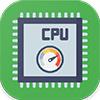 Estimated results for PassMark CPU Mark
Estimated results for PassMark CPU Mark
|
|
AMD EPYC 7413
24C 48T @ 2.65 GHz
|
50221
|
|
|
Qualcomm Snapdragon 435
NoneC NoneT @ --
|
1428
|
 Geekbench 5, 64bit (Multi-Core)
Geekbench 5, 64bit (Multi-Core)
|
|
AMD EPYC 7413
24C 48T @ 2.65 GHz
|
24322
|
|
|
Qualcomm Snapdragon 435
NoneC NoneT @ --
|
672
|
 Geekbench 5, 64bit (Single-Core)
Geekbench 5, 64bit (Single-Core)
|
|
AMD EPYC 7413
24C 48T @ 2.65 GHz
|
1359
|
|
|
Qualcomm Snapdragon 435
NoneC NoneT @ --
|
127
|

